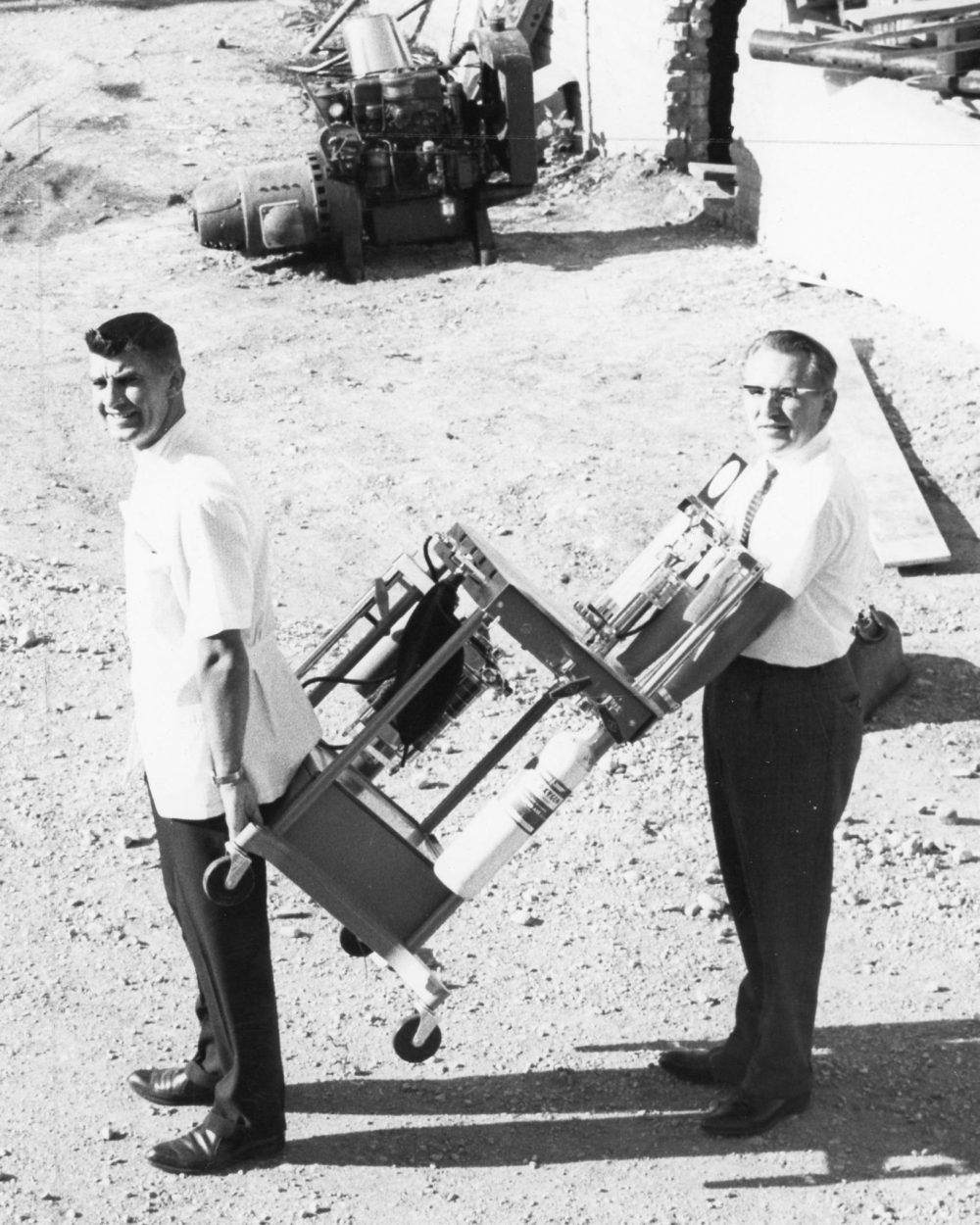COLUMN: Carillon Flashback August 21, 1964 – All Bethesda patients are moved in an hour
Advertisement
Hey there, time traveller!
This article was published 02/07/2024 (297 days ago), so information in it may no longer be current.
Just one year to the day from the turning of the first sod, the patients and staff left the old building, and just over an hour later, everyone had been moved into the beautiful new Steinbach Bethesda Hospital.
It was the day members of the hospital board and staff have been looking forward to, ever since plans for a new hospital were first drawn up in April, 1959.
When the signal for start of the long-awaited move finally came at 9 a.m., Aug. 18, the transfer of 36 patients, plus nine newborn infants, went over so smoothly that those who had looked forward with apprehension to the move, could hardly believe it was really taking place.

It took 42 members of the hospital staff and 18 extra helpers just slightly more than one hour to transfer 36 bed patients on stretchers and nine newborn infants out of the dingy and soon-to-be renovated building into the new wards.
It took another hour to transfer all of the hospital’s vital emergency equipment, oxygen, operating room, nursery, kitchen, X-ray and laboratory supplies to the new building.
That the move was completed so promptly and with so little trouble was due partly to the fine weather, but very largely to the precision planning of Bethesda Administrator Peter Pauls. Weeks prior to the move, Pauls drew up his plan, and by moving day, every member of the staff knew exactly what they would do.
Staff members were each furnished with a detailed written copy of the moving plan. The patient transfer was planned in sequence, with pediatric, medical, surgical and maternity patients moved to the new hospital in that order.
The plan called for the pediatric (children’s) wards to move at 8:45 a.m. with each patient carried by a nurse or orderly up the southwest stairs. The young patients all went into a single room and were not left unattended until the move was complete. By moving time, nurses and orderlies knew which patient they would be carrying.
Medical patients were next in line, and they were carried up the ramp and into the new hospital to beds already designated with their name cards attached. There were five stretchers handled by Civil Defence personnel, each making two trips, with a three-minute interval in between.
The surgical patients began moving at 9:30 a.m., at four-minute intervals, and by 10 a.m., they were all safely over. There remained only the maternity patients, nine mothers with infants.
After a 10-minute coffee break, the stretchers moved up to the maternity ward. The plan called for all maternity patients to be taken past the nursery, where a trestle was set up, so that the mother could wait and watch her child being put into a bassinet before she was moved to her ward in the new hospital.
This part of the plan was designed to ensure that each of the mothers would be able to rest in her new bed with complete peace of mind.
The influx of patients into the new Bethesda Hospital meant occupation of 20 of the building’s 37 beds. The youngest patients to be transferred were only a few hours old. Two of the babies were born the previous night.
For Peter Pauls, the man who engineered the transfer, it was a moment of relief when the last patient and the last piece of equipment was safely inside the new building.
Pauls confided that he hoped never again in his life to have to go through another year as hectic as the last one.
Pauls paid tribute to the member of the Civil Defence group, who along with hospital staff, all members of the town police force, and several Steinbach businessmen, carried out the task of moving patients and equipment.
